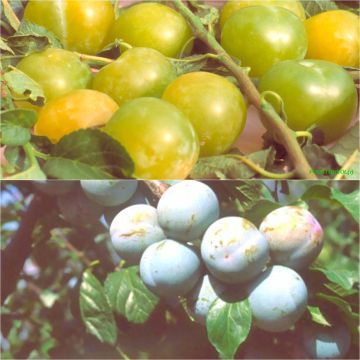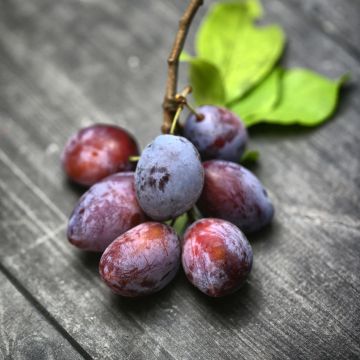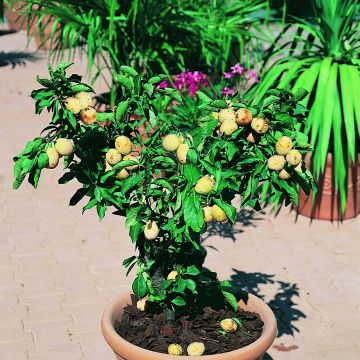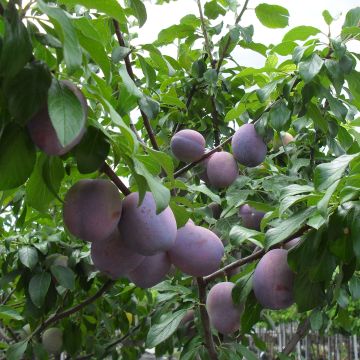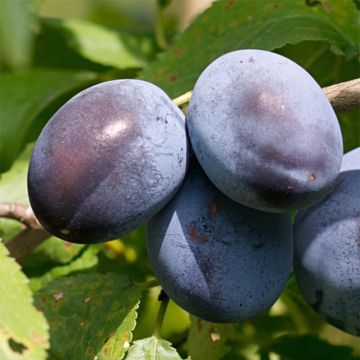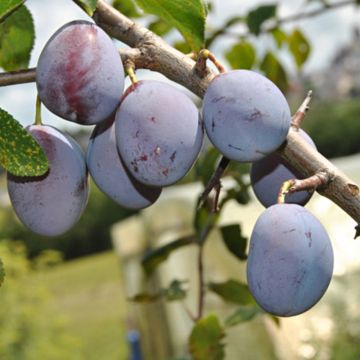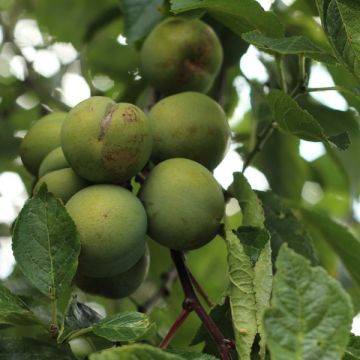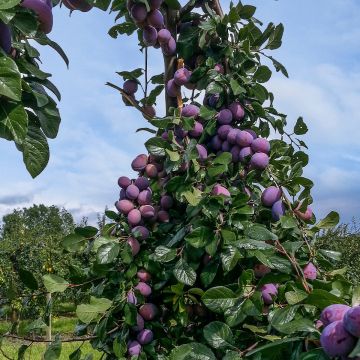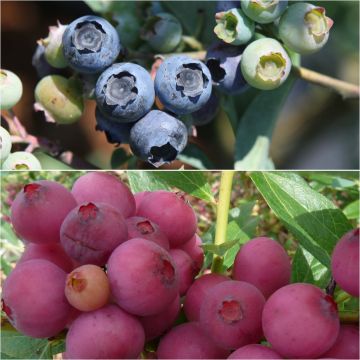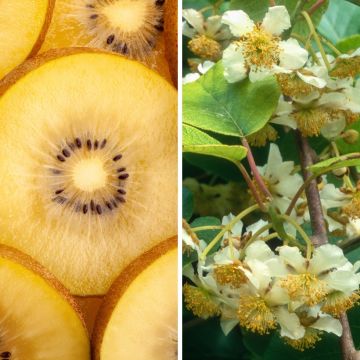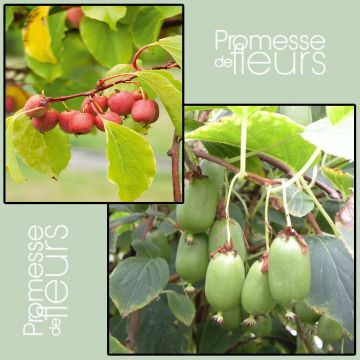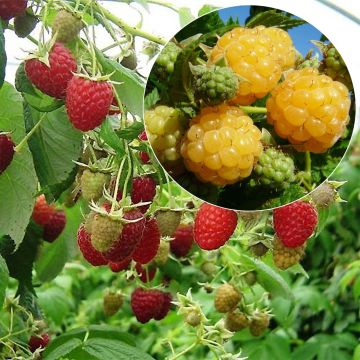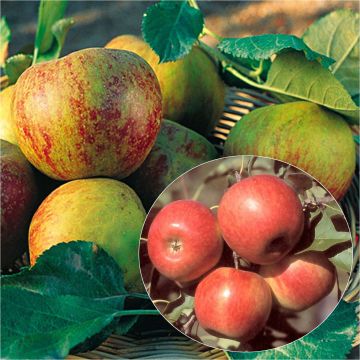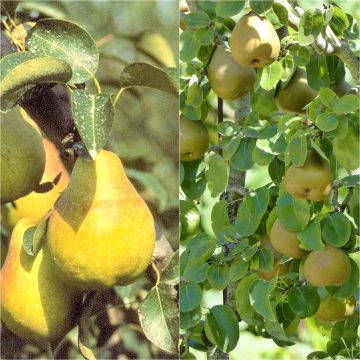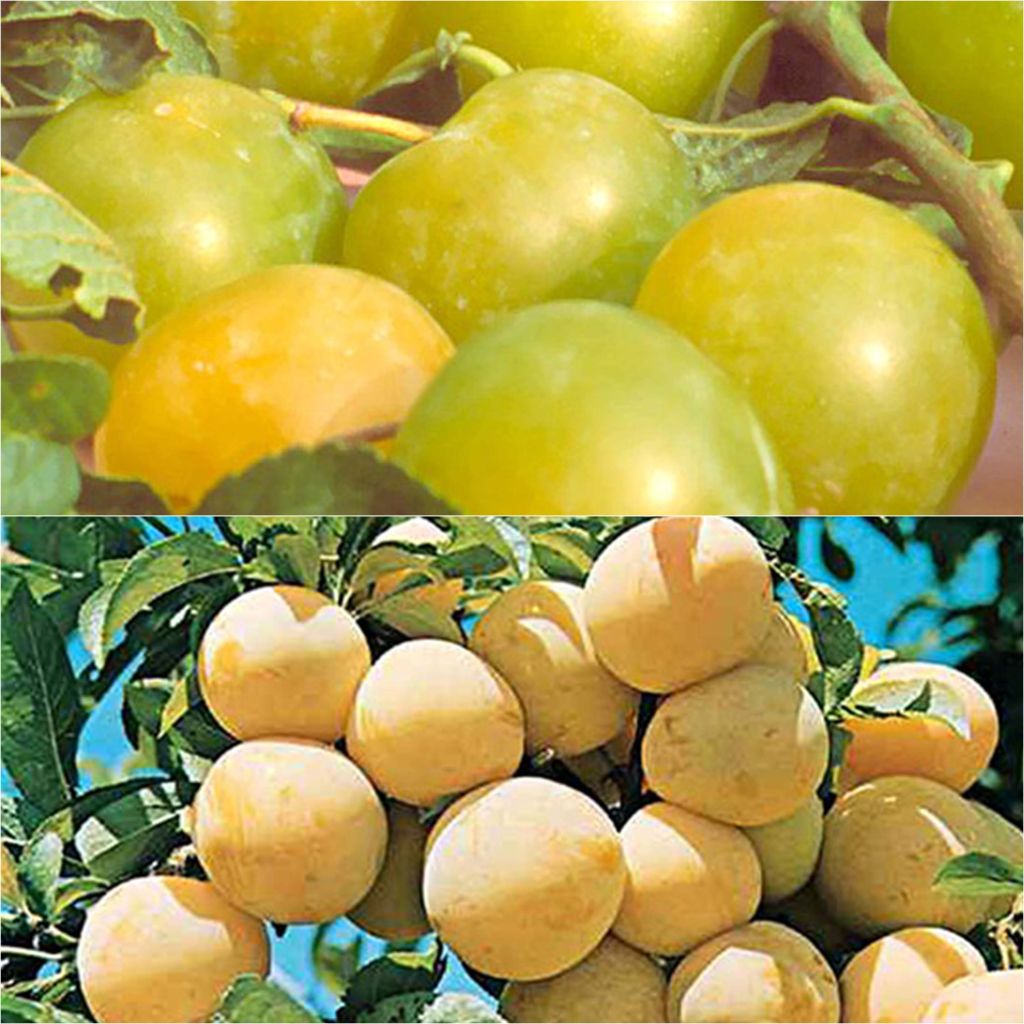

Pollinator Duo of colourful Goblet-shaped Queen Claudes
Pollinator Duo of colourful Goblet-shaped Queen Claudes
Prunus domestica Variétés Reine Claude Dorée, Reine Claude d'Oullins
Special offer!
Receive a €20 voucher for any order over €90 (excluding delivery costs, credit notes, and plastic-free options)!
1- Add your favorite plants to your cart.
2- Once you have reached €90, confirm your order (you can even choose the delivery date!).
3- As soon as your order is shipped, you will receive an email containing your voucher code, valid for 3 months (90 days).
Your voucher is unique and can only be used once, for any order with a minimum value of €20, excluding delivery costs.
Can be combined with other current offers, non-divisible and non-refundable.
This plant carries a 6 months recovery warranty
More information
We guarantee the quality of our plants for a full growing cycle, and will replace at our expense any plant that fails to recover under normal climatic and planting conditions.
Description
This Self-fertile Duo of Coloured Queen Claude Plums in a Goblet Shape brings together the excellent varieties 'Golden Queen Claude' (or green) with round and golden fruits renowned for their flavour, and 'Queen Claude of Oullins', which produces round plums, canary yellow with a touch of pink, mainly used for preserving, ripening from mid-July. When planted in the same garden, these two plum trees pollinate each other, ensuring an abundant harvest that extends from mid-July to the end of August.
This duo consists of:
- x1 'Golden Queen Claude': a variety that has been introduced for a very long time in the southwest, easy to grow, renowned for the taste of its large round plums. The tree can reach a height of 8 m (26ft). Its fruits reach maturity around mid-August, they are round and measure about 4 cm (2in) in diameter. They have a thin, greenish-yellow skin, with a golden side where the plum receives the sun. The pale yellow flesh is juicy, sweet, and aromatic: it has an excellent taste. While it is a very good pollinating variety, Reine-Claude dorée is not self-fertile and requires the presence of another plum tree to fruit satisfactorily. It is slightly susceptible to fruit splitting before ripening, but without moniliasis. This plum tree is tolerant to Bark-Split disease and withstands handling and transportation well.
- x1 'Queen Claude of Oullins': an early, vigorous, highly fertile, and hardy variety. Its fruits ripen from mid-July to August, offering a spread-out harvest. They are spherical, 4 to 4.5 cm (2in) in diameter, with a thin skin that is canary yellow tinged with pink when ripe. The green-yellow flesh is semi-firm, semi-tender, sweet, and aromatic. These fruits are mainly consumed in preserves and jams. Self-fertile, it is a very good pollinating variety for all other plum trees. It is resistant to moniliasis, and its fruits do not drop when ripe (suitable for windy areas).
Individually labelled, in 7.5/10 Litre pots
The original area of plum trees is said to be Syria, not China. During the Roman hegemony over the region, various local fruits including plums were introduced to Rome. This fruit tree has a free and spreading habit. Properly pruned, it will be easy to harvest. It requires little care and maintenance thanks to the natural shape of its branches. It prefers sun or partial shade and grows in any type of rich, moist, deep soil, even heavy but not calcareous.
Its deciduous leaves are ovate, almost oblong, serrated-dentate, and slightly pubescent. They fall in autumn. Flowering occurs in March or April depending on the varieties. The tree is then covered with white flowers that appear on the leafless branches of the previous year. They are not self-fertile in most cultivated varieties. It is therefore necessary to plant another plum tree nearby to obtain fruits or more abundant harvests.
Plums are consumed raw at the foot of the tree, in fruit salads, but also in desserts, pastries, as accompaniments to meats and dishes. They are transformed into jams, of course, but also into syrups, compotes... They can also be used to make eau-de-vie.
A goblet-trained fruit tree does not have a central leader (vertical main stem), but branches radiating from its trunk. This particular shape allows for good penetration of sunlight and air into the canopy, promoting fruit development and ripening while limiting the development of diseases.
Report an error about the product description
Plant habit
Fruit
Flowering
Foliage
Botanical data
Prunus
domestica
Variétés Reine Claude Dorée, Reine Claude d'Oullins
Rosaceae
Cultivar or hybrid
Other Plum Trees
View all →Planting and care
The Queen Claude Plum Tree grows in any type of light, rich, neutral or acidic soil, moist but not excessively humid and without limestone. Ensure proper drainage of the planting hole with a layer of gravel. Dig a good hole two to three weeks before planting. On the day, place the tree in a bucket of water to moisten the entire root ball. Place compost at the bottom of the hole. Install the tree in the hole, fill with a mixture of soil and compost. Do not bury the grafting collar. Firmly tamp down at the base. The root ball should be completely covered. Water thoroughly.
You can add a small handful of wood ash, rich in potash, during the winter to improve fruiting.
Planting period
Intended location
Care
This item has not been reviewed yet - be the first to leave a review about it.
Similar products
Haven't found what you were looking for?
Hardiness is the lowest winter temperature a plant can endure without suffering serious damage or even dying. However, hardiness is affected by location (a sheltered area, such as a patio), protection (winter cover) and soil type (hardiness is improved by well-drained soil).

Photo Sharing Terms & Conditions
In order to encourage gardeners to interact and share their experiences, Promesse de fleurs offers various media enabling content to be uploaded onto its Site - in particular via the ‘Photo sharing’ module.
The User agrees to refrain from:
- Posting any content that is illegal, prejudicial, insulting, racist, inciteful to hatred, revisionist, contrary to public decency, that infringes on privacy or on the privacy rights of third parties, in particular the publicity rights of persons and goods, intellectual property rights, or the right to privacy.
- Submitting content on behalf of a third party;
- Impersonate the identity of a third party and/or publish any personal information about a third party;
In general, the User undertakes to refrain from any unethical behaviour.
All Content (in particular text, comments, files, images, photos, videos, creative works, etc.), which may be subject to property or intellectual property rights, image or other private rights, shall remain the property of the User, subject to the limited rights granted by the terms of the licence granted by Promesse de fleurs as stated below. Users are at liberty to publish or not to publish such Content on the Site, notably via the ‘Photo Sharing’ facility, and accept that this Content shall be made public and freely accessible, notably on the Internet.
Users further acknowledge, undertake to have ,and guarantee that they hold all necessary rights and permissions to publish such material on the Site, in particular with regard to the legislation in force pertaining to any privacy, property, intellectual property, image, or contractual rights, or rights of any other nature. By publishing such Content on the Site, Users acknowledge accepting full liability as publishers of the Content within the meaning of the law, and grant Promesse de fleurs, free of charge, an inclusive, worldwide licence for the said Content for the entire duration of its publication, including all reproduction, representation, up/downloading, displaying, performing, transmission, and storage rights.
Users also grant permission for their name to be linked to the Content and accept that this link may not always be made available.
By engaging in posting material, Users consent to their Content becoming automatically accessible on the Internet, in particular on other sites and/or blogs and/or web pages of the Promesse de fleurs site, including in particular social pages and the Promesse de fleurs catalogue.
Users may secure the removal of entrusted content free of charge by issuing a simple request via our contact form.
The flowering period indicated on our website applies to countries and regions located in USDA zone 8 (France, the United Kingdom, Ireland, the Netherlands, etc.)
It will vary according to where you live:
- In zones 9 to 10 (Italy, Spain, Greece, etc.), flowering will occur about 2 to 4 weeks earlier.
- In zones 6 to 7 (Germany, Poland, Slovenia, and lower mountainous regions), flowering will be delayed by 2 to 3 weeks.
- In zone 5 (Central Europe, Scandinavia), blooming will be delayed by 3 to 5 weeks.
In temperate climates, pruning of spring-flowering shrubs (forsythia, spireas, etc.) should be done just after flowering.
Pruning of summer-flowering shrubs (Indian Lilac, Perovskia, etc.) can be done in winter or spring.
In cold regions as well as with frost-sensitive plants, avoid pruning too early when severe frosts may still occur.
The planting period indicated on our website applies to countries and regions located in USDA zone 8 (France, United Kingdom, Ireland, Netherlands).
It will vary according to where you live:
- In Mediterranean zones (Marseille, Madrid, Milan, etc.), autumn and winter are the best planting periods.
- In continental zones (Strasbourg, Munich, Vienna, etc.), delay planting by 2 to 3 weeks in spring and bring it forward by 2 to 4 weeks in autumn.
- In mountainous regions (the Alps, Pyrenees, Carpathians, etc.), it is best to plant in late spring (May-June) or late summer (August-September).
The harvesting period indicated on our website applies to countries and regions in USDA zone 8 (France, England, Ireland, the Netherlands).
In colder areas (Scandinavia, Poland, Austria...) fruit and vegetable harvests are likely to be delayed by 3-4 weeks.
In warmer areas (Italy, Spain, Greece, etc.), harvesting will probably take place earlier, depending on weather conditions.
The sowing periods indicated on our website apply to countries and regions within USDA Zone 8 (France, UK, Ireland, Netherlands).
In colder areas (Scandinavia, Poland, Austria...), delay any outdoor sowing by 3-4 weeks, or sow under glass.
In warmer climes (Italy, Spain, Greece, etc.), bring outdoor sowing forward by a few weeks.






























